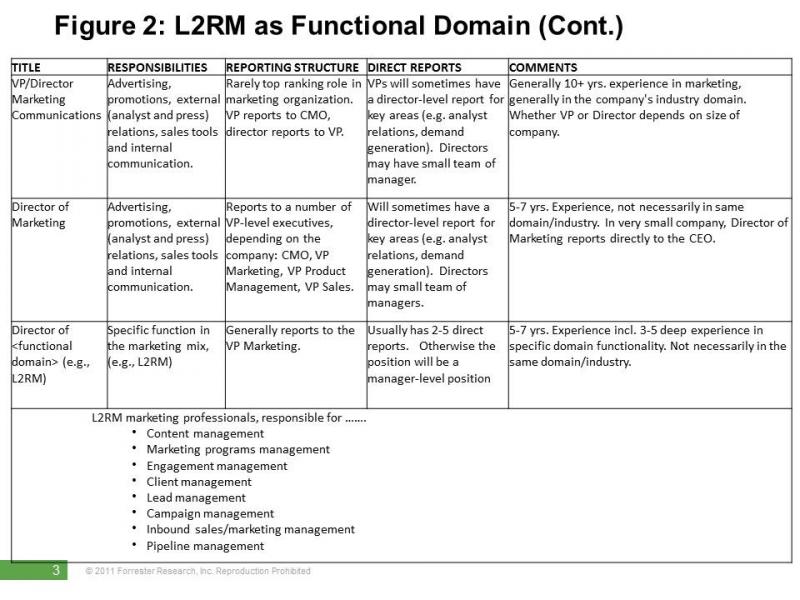Organizing For L2RM Success Is A Challenge If You Have Marketing Silos
I (writes Peter O'Neill) have just published the Organization report for our lead-to-revenue playbook. My colleague Lori Wizdo is writing most of the 12 reports that form this Forrester playbook, but I get to write a few and we are both excited that Laura Ramos, now back at Forrester, will contribute the Business Case report.
In my report, “The Skills And Structures For L2R Success,” I have avoided suggesting a standard org chart for L2R process management because our client inquiries on this topic show that one size definitely does not fit all. Instead, I have focused on how to organize a team to design and manage a buyer-centric L2RM process. And I discuss the many new job titles, roles, and responsibilities that are now appearing in marketing organizations as more and more enterprises adopt an L2R strategy. I also consider the important interfaces to many other departments that are needed to ensure L2RM success.
The greatest challenge that B2B companies face in their adoption of L2RM is moving to the ideal organization while keeping the planes flying at the same time. It is a transition, not a greenfield site project, and this issue is compounded in larger B2B enterprises, which are most likely to have a business-unit structure by product line where each BU prefers to maintain its own marketing resources. The marketing organizations may have similar names but often demonstrate different levels of L2RM preparedness and automation, either because of differences in the product or services they market or because of varying degrees of marketing leadership. As these marketing silos focus on their business unit’s products, their output tends to become extremely inside-out and product-focused over time. This makes the ultimate adoption of an L2RM process, which must be closely aligned to buyer journeys, much more difficult. Organizations that also have a larger geographic coverage often end up with a matrix of marketing silos: corporate, product, and field marketing. Many territory marketing managers report that their local budgets come together as an aggregate of smaller contributions from multiple business units: a Catch-22 scenario of having too many masters to serve and not being able to satisfy the needs of any of them all of the time — particularly if they focus on what their customers want.
The transitions can be best summarized as:
· From campaign management to inbound marketing
· From lead qualification to prospect engagement
· From collateral planning to content strategy
· From user groups to advocacy orchestration
The closest I come to an org chart is this table, which indicates the hierarchies of marketing management and where L2R would be hung in the marketing organization. However, remember that many B2B companies do not even have a CMO office!

Lori and I are looking forward to discussing our favorite topics — L2RM and content marketing — at next week’s Forrester Forum For Sales Enablement Professionals in Scottsdale, Arizona, where we will both be presenting and already have a busy agenda of one-on-one meetings. Any comments? Need more details? Drop me a line. As always, I’d love to hear from you on this and other topics. Always keeping you informed! Peter